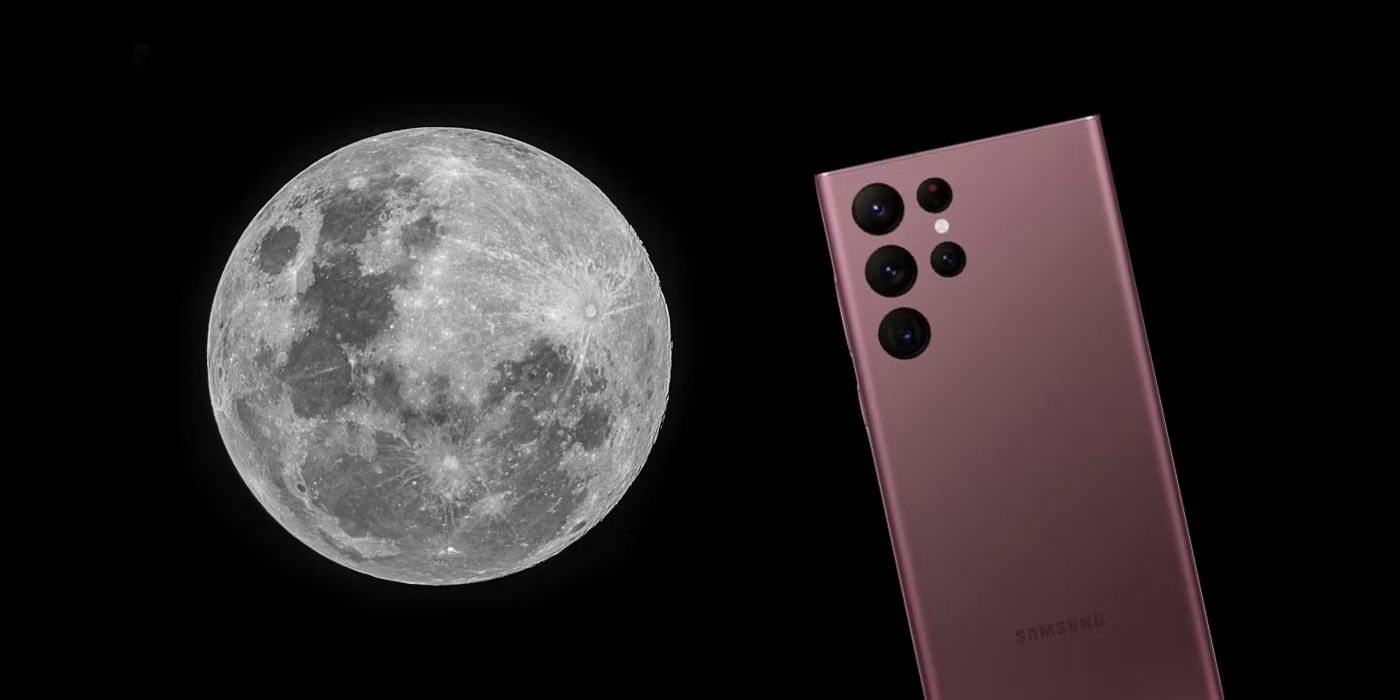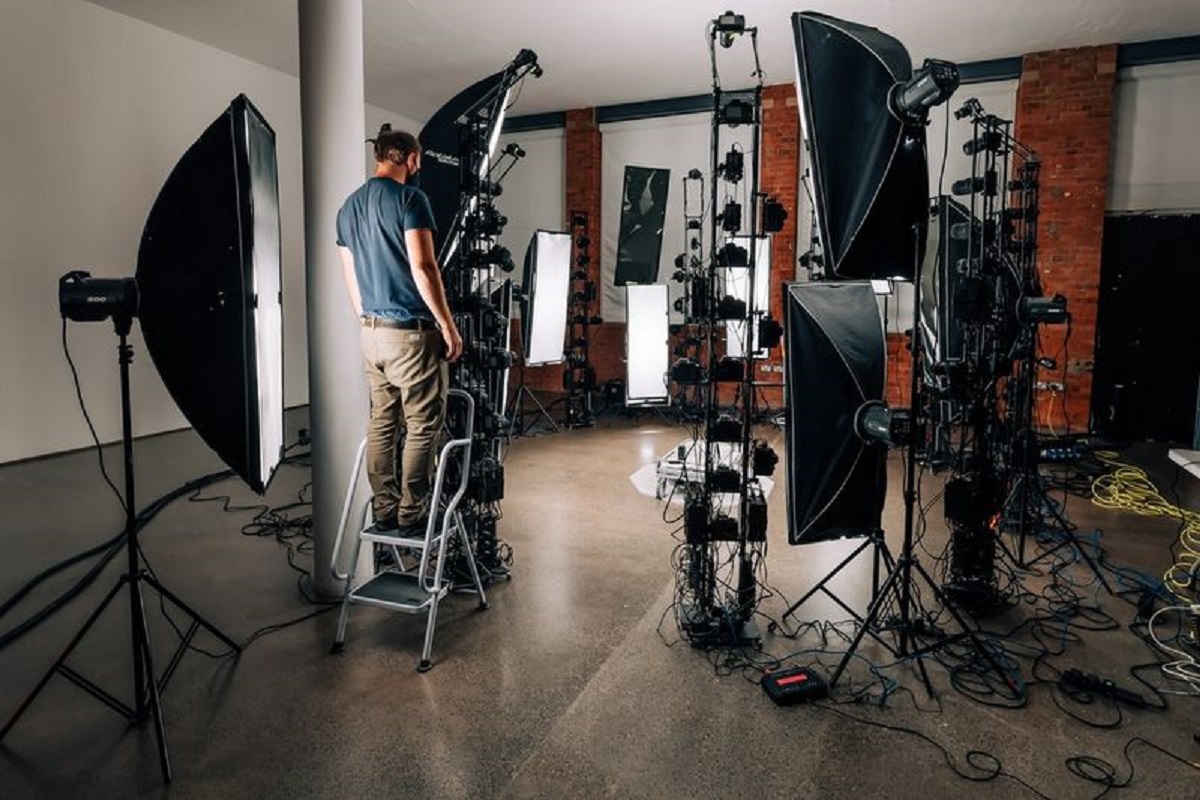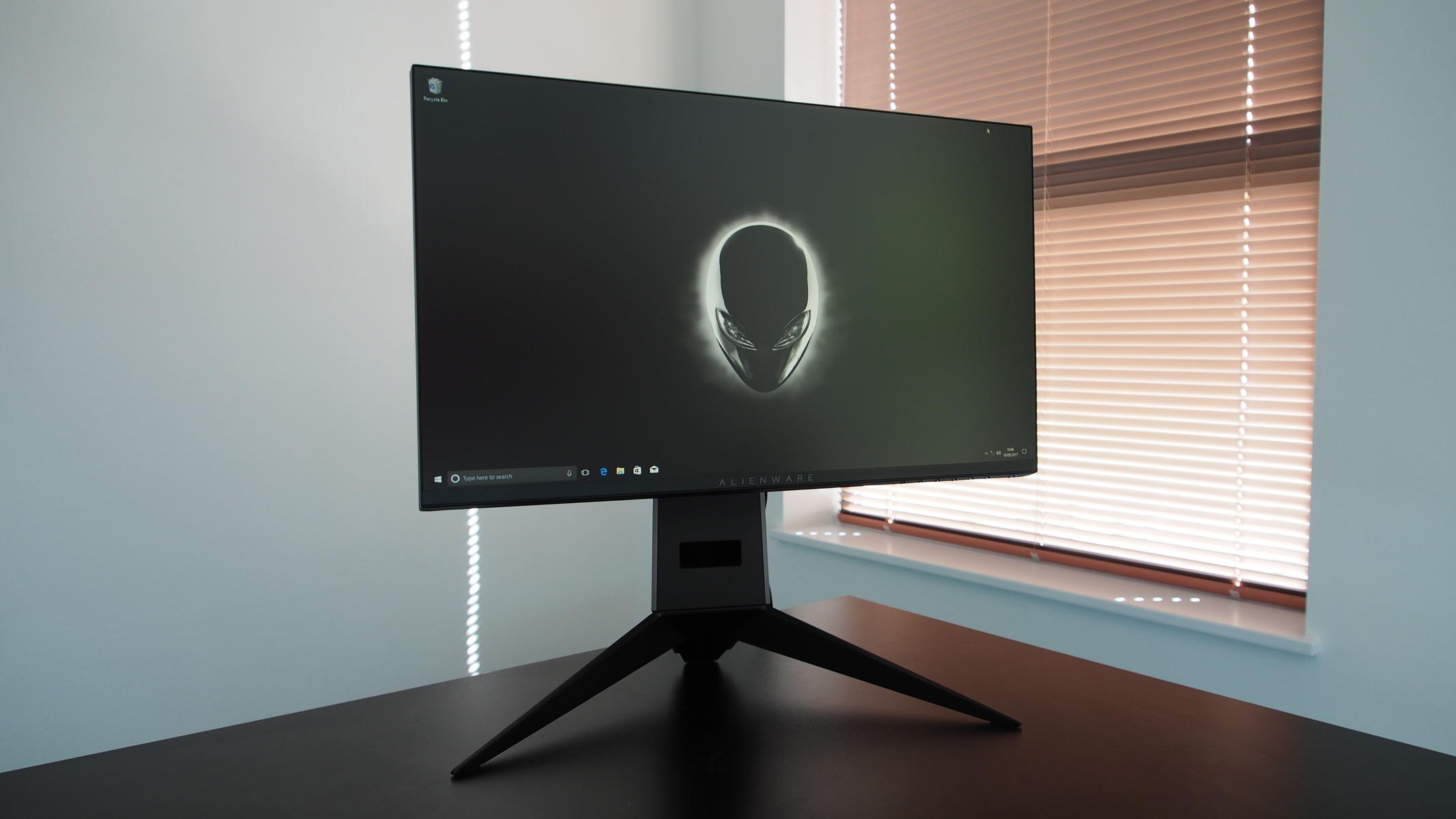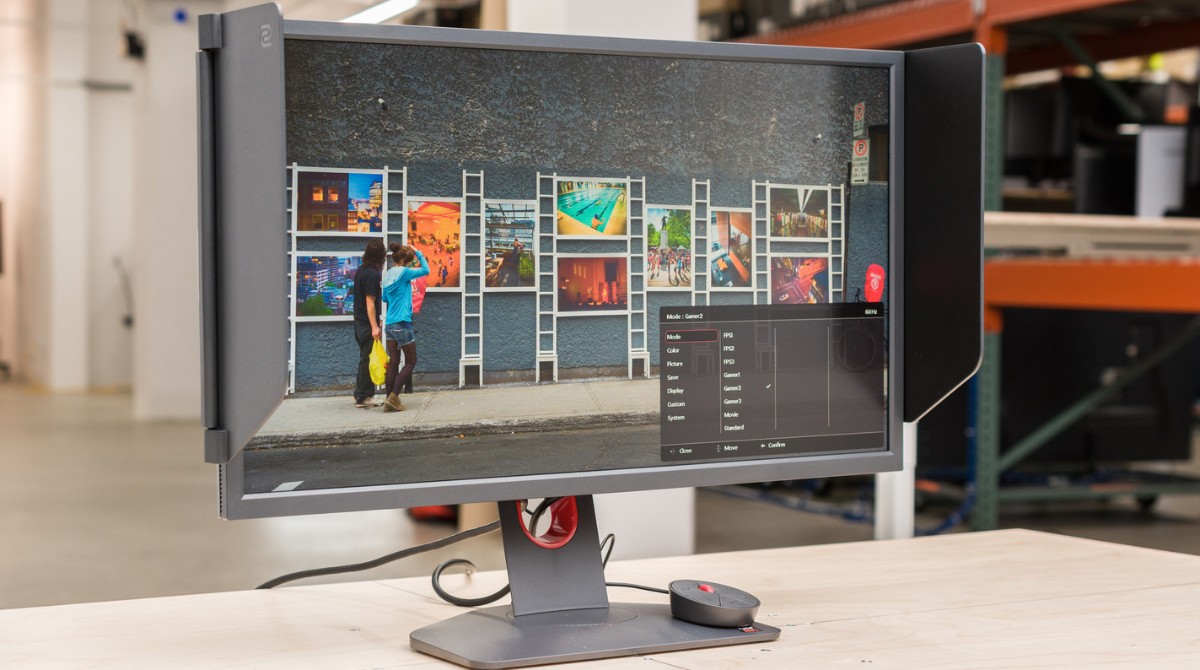Introduction
Photo editing is an essential aspect of modern photography, allowing photographers to enhance the visual appeal of their images and correct any imperfections. One common issue that photographers encounter is the presence of blue light in their photos, which can negatively impact the overall image quality. Blue light can result in a cool color cast, affecting the natural appearance of the subject and the overall mood of the photo.
In this article, we will delve into the significance of blue light in photography and explore the common issues it can cause. Additionally, we will provide valuable tips and techniques for eliminating blue light during the photo editing process, ensuring that your images maintain a natural and visually pleasing appearance.
Understanding how blue light influences photography and learning effective methods for its removal is crucial for photographers of all levels. By mastering the art of eliminating blue light through photo editing, you can significantly elevate the quality of your images, making them more captivating and true to life. Join us as we uncover the secrets to achieving impeccable image quality by addressing the challenges posed by blue light in photography.
Understanding Blue Light in Photography
Blue light, a component of the visible light spectrum, plays a significant role in photography. It influences the color temperature of images, affecting their overall appearance and mood. Understanding the characteristics of blue light is essential for photographers seeking to produce visually striking and natural-looking images.
In photography, the color temperature of light sources is measured in Kelvin (K). Blue light is associated with higher color temperatures, typically ranging from 5000K to 10000K. When a photo is captured under blue light conditions, it tends to exhibit a cool color cast, resulting in a bluish tint that can diminish the natural warmth of the scene.
Natural sources of blue light include daylight, especially during the early morning and late afternoon hours. Artificial sources such as LED lights and electronic screens also emit blue light. When these light sources are prevalent during photography, they can significantly impact the color balance of the resulting images.
Moreover, blue light can create challenges when capturing scenes with mixed lighting, where different light sources with varying color temperatures are present. This can lead to color imbalances and inconsistencies within the image, affecting the perceived accuracy of the scene's colors.
Photographers must be mindful of the impact of blue light on their images, as it can influence the emotional response and visual appeal of the final photographs. By comprehending the nature of blue light and its effects, photographers can make informed decisions during the shooting process and apply targeted adjustments during post-processing to achieve the desired color balance and overall image quality.
As we delve deeper into the realm of photo editing, it becomes evident that addressing blue light issues is a crucial aspect of enhancing the visual impact of photographs. By gaining a thorough understanding of blue light's influence on photography, photographers can effectively mitigate its adverse effects and produce captivating, true-to-life images that resonate with viewers.
Common Issues Caused by Blue Light
Blue light can give rise to several common issues in photography, impacting the overall quality and visual appeal of images. Understanding these challenges is crucial for photographers seeking to produce stunning and true-to-life photographs. Here are some of the common issues caused by blue light:
-
Cool Color Cast: Blue light can introduce a cool color cast to images, leading to a bluish tint that distorts the natural warmth of the scene. This can affect the perceived color accuracy and emotional resonance of the photograph, detracting from its visual appeal.
-
Unwanted Color Imbalance: When blue light is prominent, it can create color imbalances within the image, especially in scenes with mixed lighting. This can result in inconsistent color tones and diminish the overall cohesiveness of the photograph.
-
Loss of Warmth and Depth: Excessive blue light can strip away the warmth and depth of a scene, particularly in outdoor or natural light settings. This can lead to a flat and uninspiring visual representation, failing to convey the true ambiance and character of the subject.
-
Diminished Contrast: Blue light can impact the contrast of an image, resulting in subdued highlights and shadows. This can lead to a lack of visual dynamism and depth, ultimately compromising the overall impact of the photograph.
-
Aesthetic Distortion: In some cases, blue light can cause aesthetic distortion, altering the perceived natural colors of the subject and the surrounding environment. This can detract from the authenticity and visual integrity of the image, diminishing its ability to resonate with viewers.
By recognizing these common issues caused by blue light, photographers can proactively address these challenges during the post-processing stage, ensuring that their images maintain a natural and visually appealing appearance. Through the application of effective photo editing techniques, photographers can eliminate blue light-induced imperfections and elevate the overall quality of their photographs.
Tips for Eliminating Blue Light in Photo Editing
Eliminating blue light during the photo editing process is essential for achieving visually stunning and true-to-life images. By employing targeted techniques and leveraging the capabilities of photo editing software, photographers can effectively address the challenges posed by blue light and elevate the overall quality of their photographs. Here are valuable tips for eliminating blue light in photo editing:
Using Color Correction Tools
Color correction tools are indispensable for addressing blue light issues in photographs. By utilizing software features such as color balance adjustments, photographers can selectively reduce the presence of blue light, restoring the natural color balance of the image. This enables the enhancement of warm tones and the mitigation of cool color casts, resulting in visually pleasing and true-to-life representations of the original scene.
Adjusting White Balance
White balance adjustments play a pivotal role in combating the adverse effects of blue light. By fine-tuning the white balance settings, photographers can neutralize the cool color cast induced by blue light, ensuring that the image accurately reflects the natural warmth and color temperature of the original scene. This technique allows for the restoration of authentic colors and the preservation of the scene's inherent visual appeal.
Using Gradient Filters
Gradient filters are valuable tools for selectively addressing blue light issues in specific areas of the image. By applying gradient filters in photo editing software, photographers can target the areas affected by excessive blue light, effectively reducing its presence and restoring color balance. This technique enables precise adjustments, ensuring that the visual integrity and natural appearance of the image are maintained while eliminating the detrimental effects of blue light.
By implementing these tips for eliminating blue light in photo editing, photographers can overcome the challenges posed by blue light and produce captivating, true-to-life images that resonate with viewers. Through the strategic application of color correction tools, white balance adjustments, and gradient filters, photographers can effectively mitigate the adverse effects of blue light, ensuring that their images exude visual authenticity and compelling visual appeal.
Using Color Correction Tools
Color correction tools are indispensable for addressing blue light issues in photographs. When faced with the challenge of excessive blue light, photographers can rely on the capabilities of photo editing software to selectively reduce its presence and restore the natural color balance of the image. By leveraging color correction tools, photographers can effectively mitigate the adverse effects of blue light, ensuring that their images maintain a visually pleasing and true-to-life appearance.
One of the primary methods for combating blue light using color correction tools involves adjusting the color balance of the image. By fine-tuning the color balance settings, photographers can selectively reduce the cool color cast induced by blue light, thereby restoring the authentic warmth and color temperature of the original scene. This process enables the enhancement of warm tones and the mitigation of cool color casts, resulting in visually pleasing and true-to-life representations of the subject matter.
Additionally, color correction tools offer the flexibility to target specific color channels affected by blue light, allowing photographers to make precise adjustments to achieve the desired color balance. By selectively adjusting the blue channel, photographers can effectively reduce the dominance of blue light in the image, restoring the natural color harmony and visual authenticity of the scene. This targeted approach ensures that the adverse effects of blue light are mitigated without compromising the overall color integrity of the photograph.
Moreover, utilizing color correction tools empowers photographers to enhance the vibrancy and richness of colors, counteracting the subdued appearance often associated with blue light-affected images. By selectively boosting the saturation of warm tones and complementary colors, photographers can infuse the image with visual dynamism and depth, ensuring that the natural vibrancy of the scene is accurately conveyed.
In essence, the strategic use of color correction tools enables photographers to effectively eliminate the adverse effects of blue light, ensuring that their images maintain a visually pleasing and true-to-life appearance. By leveraging the capabilities of photo editing software to fine-tune color balance, target specific color channels, and enhance color vibrancy, photographers can overcome the challenges posed by blue light and produce captivating images that resonate with viewers.
Adjusting White Balance
Adjusting the white balance is a pivotal technique for photographers seeking to combat the adverse effects of blue light in their images. White balance adjustments play a crucial role in ensuring that the colors in a photograph accurately reflect the natural warmth and ambient lighting conditions of the original scene. By fine-tuning the white balance settings during the photo editing process, photographers can effectively neutralize the cool color cast induced by blue light, resulting in visually pleasing and true-to-life representations of the subject matter.
When confronted with blue light issues, photographers can leverage the white balance adjustments offered by photo editing software to restore the authentic colors and visual integrity of their images. By analyzing the color temperature of the original scene and the predominant light sources, photographers can make targeted white balance adjustments to counteract the cool color cast caused by blue light. This process involves calibrating the white balance settings to accurately reproduce the warm tones and natural color temperature of the scene, ensuring that the image maintains its visual authenticity.
Furthermore, adjusting the white balance allows photographers to preserve the inherent warmth and depth of the original scene, effectively countering the flattening effect often associated with excessive blue light. By fine-tuning the white balance settings, photographers can restore the richness of warm tones and accentuate the natural ambiance of the scene, ensuring that the image exudes visual warmth and depth. This technique enables photographers to convey the true emotional resonance and visual appeal of the subject matter, transcending the challenges posed by blue light.
Moreover, white balance adjustments empower photographers to achieve color accuracy and consistency, ensuring that the image faithfully represents the natural color tones of the scene. By meticulously calibrating the white balance settings, photographers can eliminate unwanted color imbalances and inconsistencies caused by blue light, resulting in a harmonious and visually cohesive representation of the subject matter.
In essence, adjusting the white balance is a fundamental technique for photographers seeking to eliminate the adverse effects of blue light in their images. By fine-tuning the white balance settings during the photo editing process, photographers can restore the natural warmth, richness, and color accuracy of their images, ensuring that they maintain a visually pleasing and true-to-life appearance.
Using Gradient Filters
Employing gradient filters in photo editing is a powerful technique for selectively addressing blue light issues and achieving visually stunning and true-to-life images. Gradient filters enable photographers to apply targeted adjustments to specific areas of the image, allowing for precise control over the reduction of blue light and the restoration of natural color balance.
When confronted with blue light challenges, photographers can strategically apply gradient filters in photo editing software to mitigate the adverse effects of blue light in specific areas of the image. By precisely targeting regions affected by excessive blue light, photographers can effectively reduce its presence, ensuring that the visual integrity and natural appearance of the image are maintained.
One of the primary advantages of using gradient filters is the ability to selectively attenuate blue light in the sky or other areas where it exerts a dominant influence. By applying a gradient filter to the affected areas, photographers can gradually reduce the intensity of blue light, restoring the natural color balance and visual authenticity of the scene. This targeted approach allows for seamless adjustments, ensuring that the overall mood and ambiance of the image remain intact while eliminating the detrimental effects of blue light.
Moreover, gradient filters enable photographers to achieve nuanced and natural-looking adjustments, seamlessly blending the affected areas with the rest of the image. By meticulously refining the gradient filter settings, photographers can ensure a seamless transition between the adjusted and unadjusted areas, preserving the overall visual coherence and natural appearance of the photograph.
Additionally, the strategic use of gradient filters empowers photographers to maintain the natural contrast and tonal balance of the image while addressing blue light issues. By selectively applying gradient filters to specific areas, photographers can preserve the richness of highlights and shadows, ensuring that the image retains its visual dynamism and depth. This approach allows photographers to overcome the diminished contrast often associated with blue light-affected images, resulting in captivating and visually compelling representations of the subject matter.
In essence, utilizing gradient filters in photo editing provides photographers with a powerful tool for addressing blue light issues and achieving visually stunning and true-to-life images. By leveraging the capabilities of gradient filters to selectively reduce the presence of blue light in specific areas, photographers can ensure that their images maintain a natural and visually appealing appearance, resonating with viewers and conveying the true ambiance of the original scene.
Conclusion
In conclusion, the pervasive influence of blue light in photography presents both challenges and opportunities for photographers. Understanding the impact of blue light on image quality and mastering the art of eliminating its adverse effects through strategic photo editing techniques are essential pursuits for photographers seeking to produce visually captivating and true-to-life images.
By recognizing the common issues caused by blue light, including cool color casts, unwanted color imbalances, loss of warmth and depth, diminished contrast, and aesthetic distortion, photographers can proactively address these challenges during the post-processing stage. Through the application of effective photo editing techniques, such as using color correction tools, adjusting white balance, and employing gradient filters, photographers can eliminate blue light-induced imperfections and elevate the overall quality of their photographs.
The strategic use of color correction tools empowers photographers to selectively reduce the presence of blue light, restore the natural color balance of the image, and enhance the vibrancy and richness of colors. By fine-tuning the white balance settings, photographers can neutralize the cool color cast induced by blue light, ensuring that the image accurately reflects the natural warmth and color temperature of the original scene. Additionally, utilizing gradient filters enables photographers to selectively address blue light issues in specific areas of the image, ensuring that the visual integrity and natural appearance of the photograph are maintained while eliminating the detrimental effects of blue light.
Mastering the art of eliminating blue light through photo editing allows photographers to transcend the challenges posed by blue light and produce captivating, true-to-life images that resonate with viewers. By leveraging these valuable techniques, photographers can ensure that their images maintain a visually pleasing and authentic appearance, conveying the true ambiance and emotional resonance of the original scene.
In essence, by understanding the significance of blue light in photography and mastering effective methods for its removal through photo editing, photographers can elevate the quality of their images, making them more visually compelling and true to life. Embracing the art of eliminating blue light empowers photographers to achieve impeccable image quality, ensuring that their photographs captivate viewers and convey the true essence of the captured moments.

























